Orchid care highlights: post-flowering care
To grow an orchid at home, you need to know many nuances. The orchid loves a lot of attention and then it thanks its owners with beautiful flowers.
Content:
- Orchid care at home
- Orchid care after flowering
- Orchid transplant and reproduction, possible problems
Orchid care at home
Orchids are epiphytic in nature. This means that under natural conditions it does not grow in the ground, but on trees. It is for this reason that a special substrate must be purchased for orchids. You can prepare it yourself using dry pine bark. The material is well disinfected with boiling water and dried. After a few days, the procedure is repeated.
When the harmful microorganisms are destroyed, the substrate is cut into small pieces and mixed with sphagnum moss.
A properly selected pot is of great importance:
- The shops sell special pots for orchids. How are they different from ordinary ones? It should be light in color so as not to attract the sun and heat, as the roots of the orchid should not overheat. The container should be transparent, made of plastic.
- You can also plant an orchid in a clay pot, but this will cause a lot of inconvenience when transplanting. Plant roots can grow to the walls, so in the future they will be injured. There should be many holes in the bottom of the pot. This will provide good ventilation and prevent water from stagnating.
A drainage layer is laid at the bottom of the pot. When the orchid will be placed in the substrate, no need to press on the roots, this can damage them.
Now you need to choose the right place for the orchid. She is very fond of light, this is the main condition on which the flowering of the plant depends. At the same time, direct sunlight should not fall on the flower. For cultivation, east and west windows are suitable. If the side is north, then artificial lighting is provided.
If there is enough light, the leaves will be a normal green color. If it darkened, it means there is little light, if it turned yellow - a lot.
The orchid needs to be watered in a timely manner. In the warm period, this is done every 3 days, in the cold season, once every 10 days. These are not final figures, you need to focus on the substrate. He must have time to dry well. Watering the plant also needs to be done in a special way. The pot is placed in a basin so that the substrate is saturated with moisture through the holes.
Watering a flower:
- Insofar as orchid loves moisture, it will respond well to spraying.
- For spraying, only warm, settled water is used.
- The procedure is carried out in the morning so that the moisture has time to evaporate and does not stagnate on the leaves.
- From time to time you can arrange a warm shower for the orchid (but not during flowering).
Like any other indoor plant, the orchid needs feeding:
- The shops sell special fertilizers for orchids.
- It is not recommended to use universal fertilizers or specialized fertilizers for other plants, this can negatively affect the health of the roots.
- During active growth, fertilizer is applied once every two weeks, in winter time once a month.
Orchid care after flowering
Throughout its life, the orchid blooms several times.This does not happen every year, so the owners are looking forward to this period. After flowering, an orchid is taken care of somewhat differently than at other times in its life.
The flowering period lasts on average from 5 to 12 months, in rare cases it is even longer. After this time, the flowers begin to dry out and fall off.
How to care for an orchid after flowering:
- If, after the flowers fell off, the peduncle also began to dry out, then nothing needs to be done in this situation. This behavior of a flower means that it has spent all its resources on flowering and goes into a dormant period in order to rest and gain new strength.
- You do not need to cut the peduncle, let it fall off by itself. There are still some useful substances in the peduncle that were used during flowering. Therefore, you need to give the orchid the opportunity to pick up the rest of the stock. When the peduncle turns yellow, it means that it is already ballast, it can be cut off, leaving 2.5 cm.
- If the flowering period is over, and the peduncle not only has not dried up, but also continues to develop, then you need to watch the plant for some time. There is still a chance that the plant is preparing for the development of the last bud. Then the peduncle does not need to be touched.
- Another method can be used to stimulate the plant. For this, the peduncle is cut off, but not completely, but slightly above the last dormant bud. Then a new baby or lateral peduncle will grow out of it.
It is important to determine in time that the orchid has faded. If the tip of the peduncle is green, then there is a chance of its further development, even after a few months. The flowering period ends when the tip of the peduncle turns yellow, black, or simply dries up. Otherwise care is provided the same... Only the mode of fertilization changes, it is applied in the same volume only a little less often.
If ideal conditions are provided for the orchid, then it will bloom again after 3 months, on average, new flowering occurs in six months.
But often the orchid does not bloom for a long time. In this case, this process can be stimulated. For this, the plant needs to survive the stress factor. It is enough to provide a sharp temperature drop or reduce the irrigation regime. In the first case, the flower is transferred to conditions where the air temperature is +18 degrees. For a thermophilic orchid, this is a palpable cold. In such conditions, the flower is kept all night, and then returned to a warm room. It is better not to carry out such operations in winter.
After flowering, it is provided:
- Air temperature from 10 to 30 degrees.
- Bright light provided lack of direct sunlight.
- A lot of moisture.
- Root ventilation.
- Reducing the amount of dressings.
There are no particular difficulties when caring for an orchid that has bloomed.
Orchid transplant and reproduction, possible problems
Often it is impossible to transplant an orchid, this is done no more than 1 time in 3 years. Immediately after buying an orchid in the store, you also do not need to disturb it. Moreover, they acquire it, as a rule, during the flowering period.
The transplant is carried out in the following cases:
- When the plant has reached a large size and falls along with the pot.
- Roots lack space in the substrate.
- Other root problems.
As for reproduction, novice flower growers will have to suffer. The process requires a lot of attention and effort. Reproduction is carried out with the help of children, which are located in the axils of the leaves, children that emerge from dormant buds on a peduncle, which has faded and by the method of division.
To propagate an orchid with the help of children from the sinuses, you need to damage the growth point. On the peduncle, you need to find a sleeping bud and awaken it. The room must comply with a temperature regime of 22 to 29 degrees. An incision is made at the base of the scales with a thin blade. The scales cut in a semicircle are removed with tweezers, now the sleeping kidney becomes visible. It is advisable to treat it with a growth regulator.
In a month, children with several leaves will appear in this place. In three months, the children will have significant roots. To make the breeding process more successful, the new plant is provided with a greenhouse effect, which is provided by plastic wrap. This is not necessary if the room humidity is high.
When the roots grow 2 cm, the future flower is cut from the plant. You can not grow it, but immediately plant it in a substrate for orchids in a special pot.
You can also get a new plant from a cut peduncle. Before boarding, he must go through the rooting process... For this, ordinary settled water with the addition of liquid mineral fertilizer is used. Do not deepen the peduncle much, the water should cover it by no more than 6 cm.
In this method, you will also need to awaken the kidney. How this is done was described above. Until the peduncle has taken root, the water must be refreshed, and the cut of the plant must be renewed. If the air in the room is dry, then a plastic bag is put on the plant.
If a baby has formed on the plant, then it can be disconnected for further reproduction. After separation, the babies are soaked in growth hormone for 20 minutes. This is necessary to enhance the growth of the root system.
Almost all hybrid orchid species are suitable for indoor cultivation. Beginners may think that the orchid, like many other plants, loves fresh air and will not refuse to spend the summer season on the balcony. But this opinion is wrong. There will be no benefit from this, but it is very easy to harm a fragile flower.
Diseases and pests of orchids:
- The orchid is a delicate whimsical plant, so problems of an infectious and non-infectious nature may appear.
- The most common diseases: thrips, mealybug, scale insect, spider mite.
- The orchid can be affected by fungal diseases, which can be identified by the spots on the leaves and their decay.
- If the plant is struck by Fusarium, then the orchid will certainly die.
To grow a healthy, abundantly flowering orchid, you need to give it the maximum of your love and attention. She should become a favorite plant, which will be provided with year-round care.
More information can be found in the video.



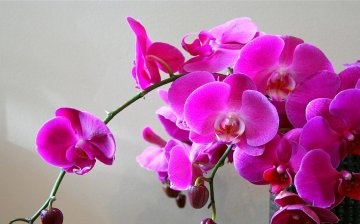
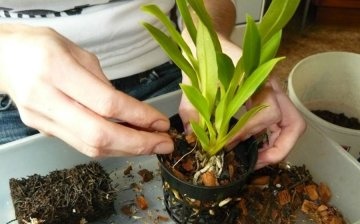
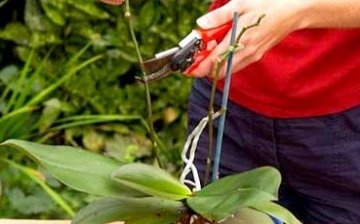
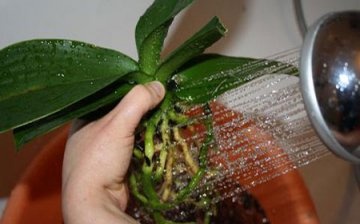
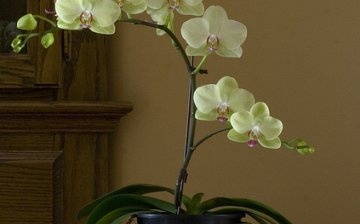





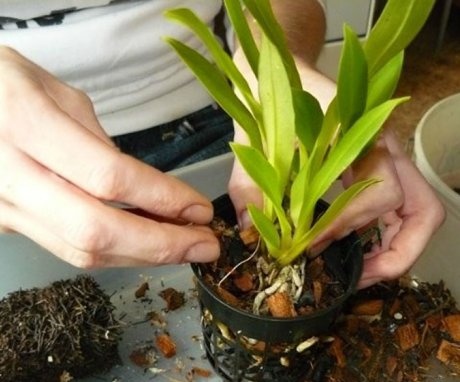

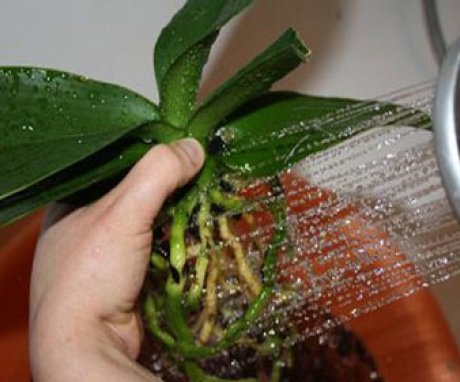
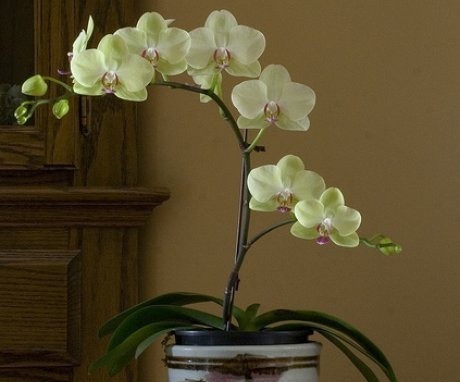
Our phalaenopsis orchid grows in the bark of a tree cut into pieces, which are poured into a plastic pot with holes in the walls. My wife tried to multiply the flower several times, but nothing happened. The peduncle always grows alone.